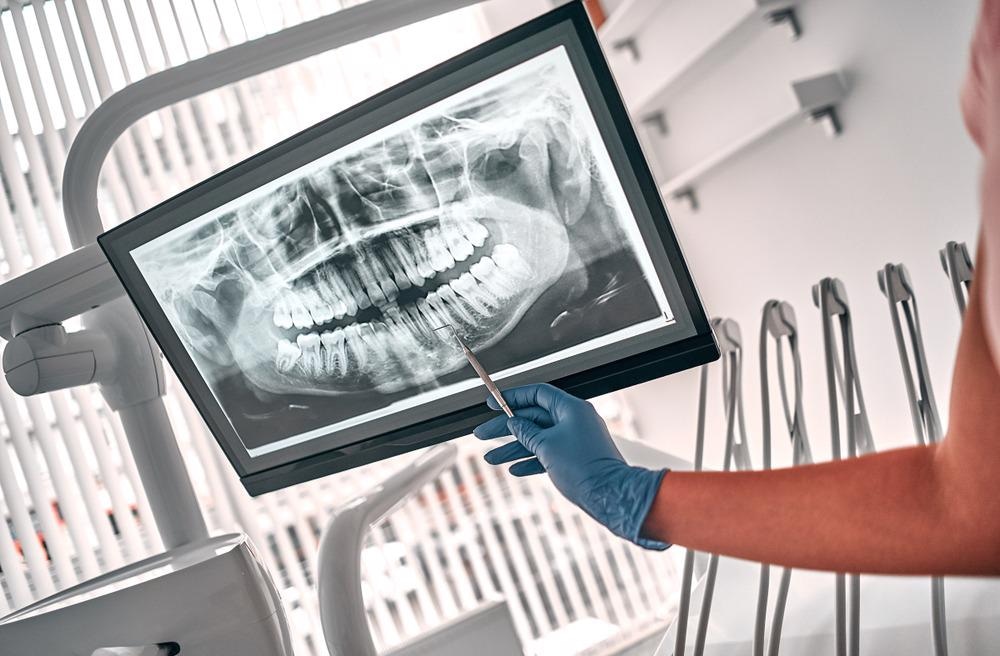Romanian researchers have recently presented a study, published in the journal Materials, in which they investigated the mechanical properties of hybrid polymer CAD/CAM restorations for dental applications.

Study: Mechanical Properties of Polymer-Based Blanks for Machined Dental Restorations. Image Credit: ORION PRODUCTION/Shutterstock.com
Dental restorative materials are used to replace tooth structure loss, typically due to dental caries (dental cavities), but also tooth wear, dental trauma, and on some occasions, such materials may be used for cosmetic purposes.
Therefore, in restorative dentistry, it is of extreme importance that advanced dental materials demonstrate improved structural, biological, and aesthetical features that can maintain and mimic the tissue integrity of the dental tissue being replaced.
Considering the complex structure and functions of dental tissue and how it is of significant importance to the quality of everyday life and health (in eating, speaking, swallowing, and proper breathing), the characteristics and properties of restorative materials must meet specific requirements; from high flexibility crucial for impression materials to exhibiting excellent rigidity a key factor in crowns and fixed dental prostheses.
As the field of dentistry has steadily progressed over the years, various types of materials, e.g., metals, polymers, ceramics, and composites, were fabricated through various methods, e.g., polymerization, casting, and porcelain densification by sintering, to design new restorative materials with enhanced mechanical properties and the appropriate characteristics for both provisional and definitive restoration.
Further Reading: The Use of Graphene in Dentistry
Therefore, materials used in restorative dentistry must be able to stand the test of time while fulfilling their mechanical duties without impeding or harming the health and quality of life of the patient. Blanks must be able to deliver technologically advanced, strong, natural-looking, restorations that are perfectly integrated into the physiognomy of each patient.
The emergence of computer-aided design/computer-aided manufacture (CAD/CAM) technology in dentistry has considerably improved the fabrication of different restorative dental materials as alternative aesthetic restorations to traditional laboratory-processed materials.
As well as the mechanical and morphological features, ensuring restorative materials are fabricated with exactitude signifies another key parameter, with critical functions in the protection of connective tissue, bacterial contamination, and preservation of periodontal tissues.
Furthermore, essential particularities, and challenges such as making sure the tooth stays fixed in its normal position and maintaining aesthetic and oral functions (mastication and speech), are also vital parameters to which the precision of restorative material should match.
It has been reported that CAD/CAM can solve these challenges; the CAD/CAM composite restorative material showed better marginal accuracy than directly fabricated composite
Lucian Toma Ciocan, Professor of Prosthetics Technology and Dental Materials, “Carol Davila” University of Medicine and Pharmacy, Bucharest
While conducting their investigations, the researchers took a variety of key parameters into account including, technological considerations, indentation and hardness suitability, mechanical properties, and morphology of restorative materials.
The team found that nanoindentation was one of the most precise and reliable ways of determining and comparing the micro-mechanical properties of restorative materials. During the nanoindentation process, the materials may experience various stress-induced phase transformation mechanisms, which are reflected as three types of phenomena: pop-ins, pop-outs, and elbows.
“Among the investigated dental specimens, hybrid ceramic-based CAD/CAM presented the highest micro-mechanical properties, followed by CAD/CAM PMMA-graphene, while the lowest micro-mechanical features were registered for CAD/CAM multilayered PMMA,” Ciocan says.
Therefore, the ceramic-based CAD/CAM are considered to be the most suitable for restorations from the micro-mechanical point of view: “Further clinical investigations need to be performed to investigate their safety and clinical performance as reliable dental materials for provisional or long-term restorations,” states Ciocan.
How 3D Printing Could Help to Regrow Teeth from the Root
According to the World Health Organization (WHO), it is a matter of urgency that the oral health research community boosts its operational research in relation to the use of dental restorative materials.
Clinical research should carefully consider risk assessment, criteria for use of restoration materials alternative to current materials including dental amalgam, development of standardized and reliable criteria for evaluation of the quality of restorations, occupational hazards, and development and dissemination of clinical guidelines for fabrication dental restorations.
The WHO states it is crucial that oral health research strengthens the measurement of the evidence of using new and alternative restorative materials. In addition, it is imperative that research documents the cost-effectiveness and reliability of new materials and composites across the board in the dental industry.
While the study indicated that ceramic-based CAD/CAM was the most suitable for restorations, further work is needed to meet the guidelines and long-term expectations that come with restorative dentistry: materials must not only fulfill a mechanical material function but also safeguard the health and quality of life of dental patients, while remaining cost-effective for all parties, from beginning to end.
References & Further Reading:
Ciocan LT, Ghitman J, Vasilescu VG, Iovu H. Mechanical Properties of Polymer-Based Blanks for Machined Dental Restorations. Materials. 2021; 14(23):7293. https://www.mdpi.com/1996-1944/14/23/7293
World Health Organization. ‘Future Use of Materials for Dental Restoration’ November 2011 [https://www.who.int/publications/i/item/9789241500647]
Disclaimer: The views expressed here are those of the author expressed in their private capacity and do not necessarily represent the views of AZoM.com Limited T/A AZoNetwork the owner and operator of this website. This disclaimer forms part of the Terms and conditions of use of this website.